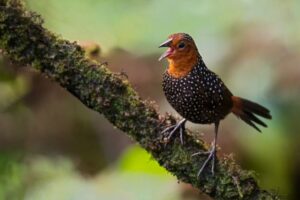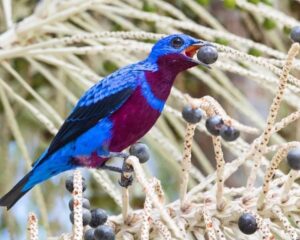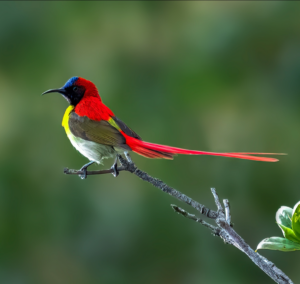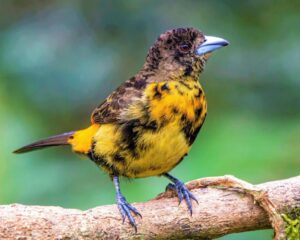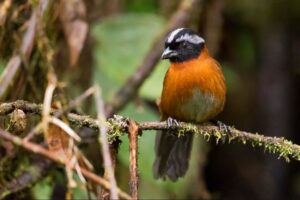Meet the Prosthemadera novaeseelandiae, also known as the Tui, an extraordinary native bird of New Zealand’s picturesque landscapes. Let’s explore the intriguing characteristics that make this bird a beloved symbol of New Zealand.
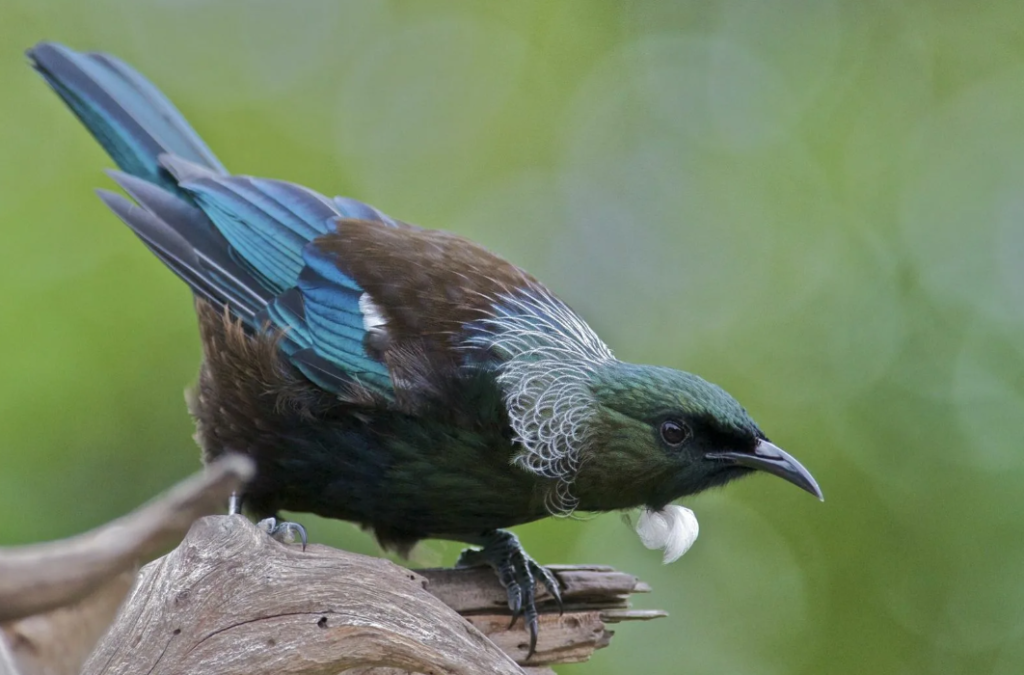
A Vibrant Feathered Exhibit:
The Tui is renowned for its iridescent plumage. It is not surprising that the Tui is regarded as a living masterpiece, given its glossy dark feathers, metallic blue-green areas, and vibrant white neck plumes.
The Melody Conductor:
Prepare to be enraptured by the Tui’s mesmerizing vocal abilities. Their melodies are a symphony of different tones, sounds, gurgles, and even imitations of other bird species. The Tui’s captivating cries reverberate throughout New Zealand’s forests, lending a distinctive touch to the country’s natural soundtrack.

An Active Diet:
Tuis, as nectarivores, serve a crucial function in pollination, especially for native flowering plants. In addition to nectar, they are proficient at capturing flying insects, demonstrating their versatility as omnivorous consumers.
Masters of Aerial Arts:
Observe a Tui in flight to witness the bird’s acrobatics in the air at their loveliest. These birds display their agility and flare for the dramatic by performing deft maneuvers and graceful dives.

Cultural Importance:
Tui holds a special position in Maori culture, frequently representing vitality, joy, and harmony with nature. Its unique presence in folklore, art, and melodies demonstrates its profound importance in the souls of indigenous people.
Difficulties and Conservation:
While the Tui remains an emblematic representative of New Zealand’s natural heritage, it confronts threats from habitat degradation and introduced predators. Important conservation efforts are required to protect their populations and maintain their essential function in the ecosystem.

Conclusion:
Tui, or Prosthemadera novaeseelandiae, is a genuine representative of New Zealand’s natural grandeur and cultural heritage. It is an irreplaceable part of the nation’s identity due to its vibrant hues, enchanting melodies, and ecological significance.
thenewsday

